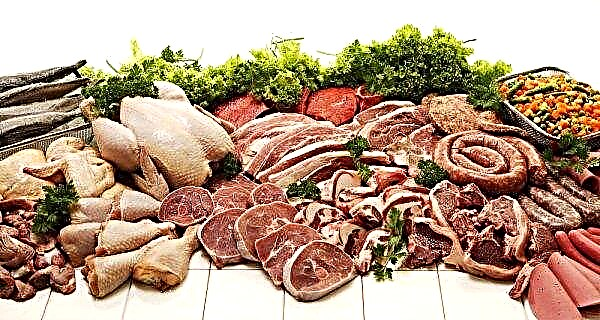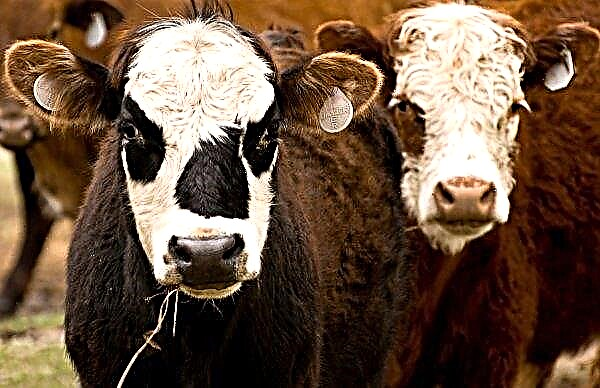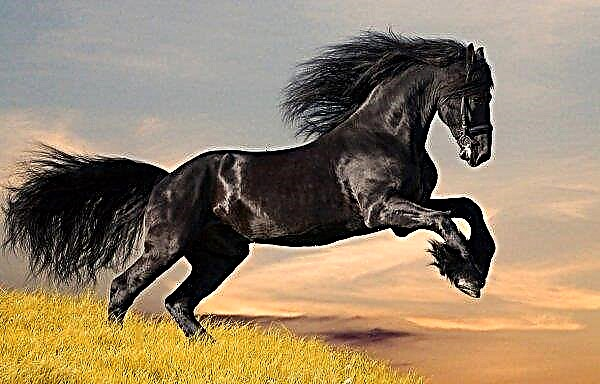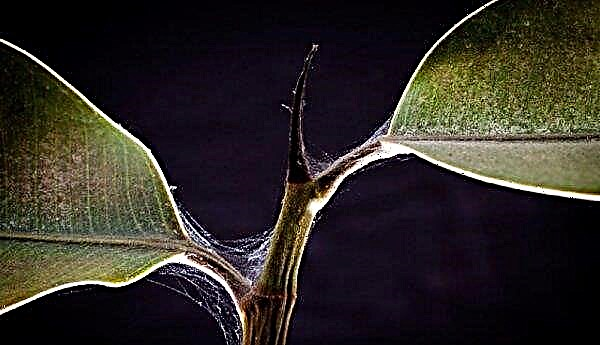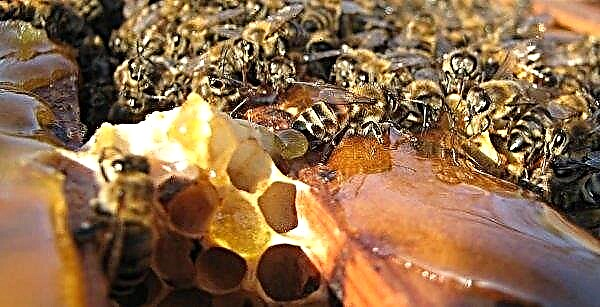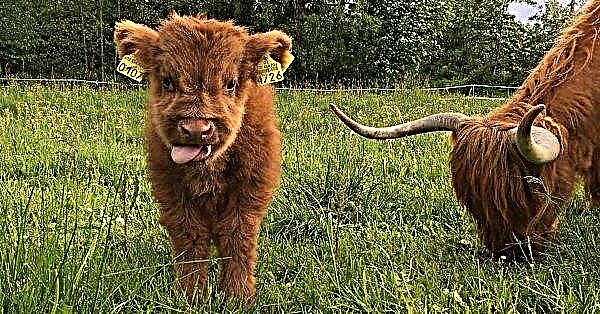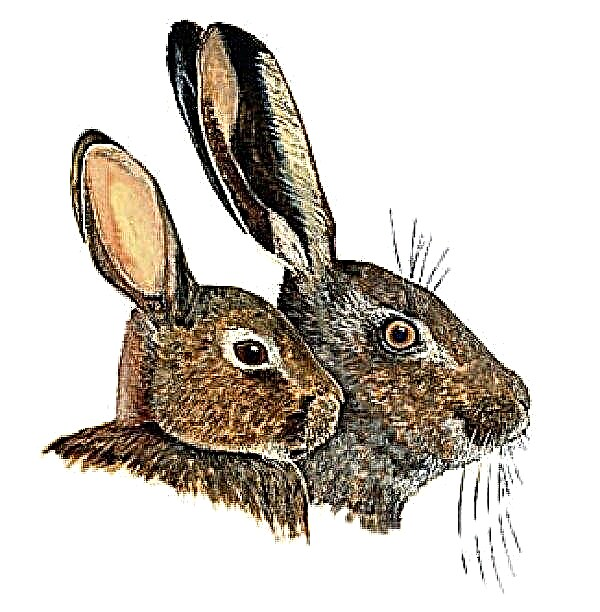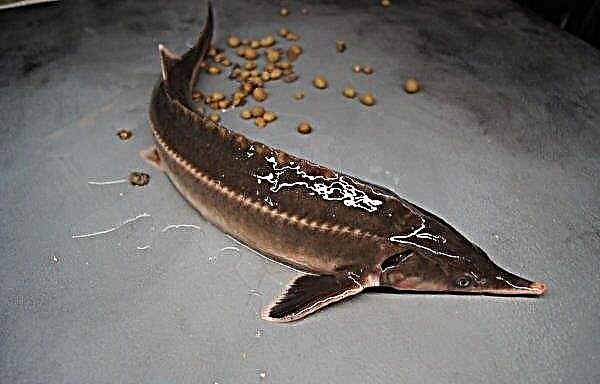Recently, thanks to advances in genetics and biology, through breeding, it has been possible to breed many new breeds of domestic animals that combine the best qualities of the species on the basis of which they were bred. In our article, we will talk about the Milfleur chickens - about the history of the breed, its advantages and disadvantages, description and features of the appearance of the representatives, about the diet and the necessary living conditions in the household.
History of the breed
The origins of the breed are lost in the pages of history: it is not known for certain who and when made the selection of this species of chickens. The only known fact is that Milfleur became widespread in Holland and France at the beginning of the 16th century. It is believed that at the end of the XV century they were created in one of the northern regions of France, because their name De mille fleurs (from the French - “thousand flowers”) speaks of their belonging to this country.
Did you know? In the world there are more than 24 billion chickens of all breeds of chickens, which is several times more than any other bird species.
Then the breeder set himself the task of breeding a breed that would successfully combine miniature, high productivity, unpretentiousness in care and external attractiveness, which he managed to achieve. Since the breed was bred, its distribution throughout the world and popularity has increased significantly.
Advantages and disadvantages
If we talk about the advantages and disadvantages of the described species, it should be noted that Milfleur chickens have many positive qualities, and the number of negative ones is described by only a few positions.

- Among the advantages include:
- high egg production with miniature size;
- low maintenance costs due to the fact that dwarf chicken eats a small amount of feed;
- unpretentiousness to the conditions of detention (including the chicken coop);
- high progeny survival rate - 96–98%;
- the instinct of a brood
- external beauty, especially in representatives of isabella color;
- unique colors of plumage;
- resistance to various diseases.
The only minus of the breed is the possibility of stopping egg production in case of non-compliance with the fundamental recommendations for the arrangement of the chicken coop and the conditions of detention. The rest of the considered type of chickens has no significant drawbacks.
Description and Features
The dwarf breed of Milfleur chickens is exceptional and special, because their external beauty, high egg laying rates and ease of care and maintenance allowed these animals to be included in the ranks of the most revered and sought after among other breeds.
Exterior
The miniature chicken Milfleur has a small head, a neat scallop of bright red color for females and a luxurious scarlet comb for males, a long elegant neck, covered with a thick plumage, a narrow chest and a rather long and fluffy tail.
Did you know? Chickens are able to recognize and memorize more than 100 different individuals, including humans.
The whole body is covered with bright feathers, the main colors of which are:
- white;
- black and white;
- porcelain;
- tricolor;
- blue speckled.
Thanks to modern technologies in biology and genetic engineering, the creation of a unique color of plumage allows you to bring the most inventive ideas to life, using pigmentation, blotches, edging and various spotting in coloring feathers. Another distinctive feature of Milfleur is that their miniature paws are decorated with thick plumage in the form of peculiar flared pants. Visually, this makes the chicken even more graceful and elegant.
Weight indicators
Given the fact that Milfleur is a dwarf breed, one should not expect high weight indicators from them. This is an egg breed that is not bred for meat. The average weight of a rooster varies in the range of 750–850 g, and laying hens have slightly smaller dimensions — their weight is about 650–700 g.
Puberty and egg production
Sexual maturity occurs quite quickly, and already after the first half of the year from the moment of hatching, individuals are able to reproduce. High rates of egg laying in healthy and full-fledged chicken reach 100-115 units per year. Moreover, the weight of one egg reaches 27–32 g.
Instinct of incubation
As for the instinct of incubation, it is very well developed in the breed described. The hens perfectly fulfill their maternal function, do not leave the nest, do not spoil the masonry, but carefully and steadily withstand the entire period of incubation and in every way protect the nest and offspring.  At the same time, roosters also possess paternal qualities, taking care of brood hens, guarding the masonry and subsequently helping newborns to develop the surrounding space.
At the same time, roosters also possess paternal qualities, taking care of brood hens, guarding the masonry and subsequently helping newborns to develop the surrounding space.
Feeding ration
Water and food are fundamental conditions in the life of all living things, and therefore, in the production of chicken livestock, the nutrition factor is also key.
Chickens
The basis of the diet of chickens is based on a specialized starter feed, which is also universal for all breeds of chickens. In addition, walking and grazing are carried out on greens and grass. The curd mixture with the addition of chopped onion feathers is also used as feed.
Important! The first seven days after the hatching of the chicks they are fed a mash of cottage cheese, eggs and greens with an interval of 2 hours. Only after this period, cereals, grains and other ingredients can be gradually introduced into the feed.
Drinkers for chickens are also placed, where serum is periodically poured to strengthen the bones, as well as a weak solution of potassium permanganate. Water is a very important part of raising chickens. From the first days of their life, their body consists of 85% of water, and by 32 weeks this figure drops to 60%. Maintaining sufficient water is fundamental, as is the sufficiency of food in feeders. Feeding is carried out throughout the day with an interval of 3 hours, adding a little feed.
Adult chickens
Milfleur’s chicken food is quite standardized, which often surprises breeders and experienced farmers, because decorative pets usually require a special approach. So, in the summer of Milfleur include a maximum of greenery, grazing in open areas.

In addition, mixed fodders and grain mixtures participate in the diet - they are recommended to be fed in the morning and evening. In the afternoon, the chickens should move freely along the walking yard with greens and eat at will. Be sure to take care of the water: it must be constantly updated in drinking bowls with a regularity of 4-6 hours, to prevent stagnation processes. In winter, chicken mixers with the addition of cereals, grated eggs, cottage cheese, as well as broiler mixes are connected to the chicken diet.
Conditions of detention
In addition to the diet, special attention should be paid to equipping the chicken coop and the walking yard. We will talk about the main recommendations, rules and tips below.
Did you know? Recent studies have shown — hens are so smart that they can solve problems, understand causes and effects, transfer knowledge, demonstrate self-control and worry about the future.
Chicken coop requirements
Milfleur chicken is not demanding on the size of the chicken coop - for her height is more important than width and depth. The area may vary depending on the population based on the fact that one dozen chickens require at least 1 m².
Particular attention should be paid to the height of the chicken coop. Since the representatives of the considered decorative breed have rather strong and well-developed wings, they really like to fly from place to place and climb higher to perch. Accordingly, the chicken coop should be equipped with ladders and perches at an altitude of 1.5–2.5 m.

For convenience and control of temperature and humidity, it is recommended to line the floor in the chicken house with shavings or straw, as well as use peat mixes - then the birds will be warmer and more comfortable. As for the temperature regime, young animals are kept under special conditions, when the average temperature indicator varies in the range +28 ... + 32 ° С.
After the chickens reach the age of 7 days, they are transferred to normal conditions. In winter, they need to be relocated to a warmed chicken coop, where room temperature will be maintained, since miniature chickens are very susceptible to the negative influence of cold weather. This is due to the fact that the dwarf breed does not have abundant fat and is not able to heat itself under any conditions.
Important! If you neglect the rules of cleanliness, then Milfleur's chickens can stop rushing and lose part of their plumage, having lost both production and aesthetic value.
Maintaining cleanliness and sterility is also an important factor in the maintenance of the Milfleur breed. Daily cleaning of the chicken coop and litter replacement is necessary to avoid the appearance of diseases and parasites. Sick chicks should be removed from the rest to prevent the spread of infection. A visit to the veterinarian and the use of appropriate vaccines are important measures to avoid serious problems with the stock.
Walking patio
Special attention is required to equip a walking yard. It should be a fairly large space with green grass lawns, where birds can move and graze freely throughout the day. In such a courtyard, awnings must be equipped, shaded places where hens can hide from the midday heat.

Also, a mesh fence of at least 2 meters high should be provided around the perimeter so that the chickens do not fly over it. The grid will allow air to circulate in the courtyard, creating the most natural and natural living conditions.
In addition, drinking bowls should be placed in a chaotic order so that birds can use them at any time. 2-3 drinkers per yard will be enough. Water should be replaced regularly, especially in the hot season.
Did you know? Chickens love to play. If they have enough space, they will run, jump and even sunbathe.
Useful Content Tips
The list below summarizes some additional tips and tricks for keeping Milfleur chickens in the household:
- If you intend to use a box for hatched chickens, be sure to make small holes to allow the chicks to breathe.
- If you have any doubts about the health of your pets, contact your veterinarian.
- Use lamps from 60 to 120 watts if you live in a cold place. These lamps help maintain the required temperature of + 30 ° C. They should be placed at a suitable height, not very close to the chickens. You can adjust it using a thermometer placed inside the tank with the chicks.
- Prepare feeders that must be extended. The food in them should be distributed in such a way that every chicken can get access to it, without clinging too tightly to the others.
- When the fifth week has passed since the birth of the chickens, you can offer them chopped vegetables, insects and crumbs to supplement their balanced diet, providing sufficient fat, protein and carbohydrates.
- Clean the drinkers and feeders daily from the material you use as flooring and clean the floor weekly.
- When working with chickens, you must have special tools to prevent contamination, such as gloves, protective equipment for hair and mouth. Keep your hands washed and your clothes clean.

Guided by the features of the Milfleur breed described in our article, as well as recommendations on the care, maintenance and feeding of these chickens, you can grow a healthy and full-fledged livestock of poultry.


